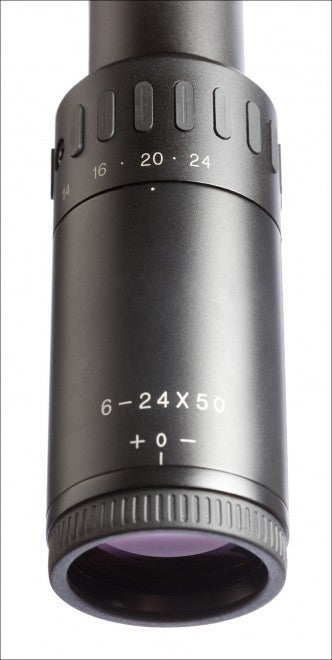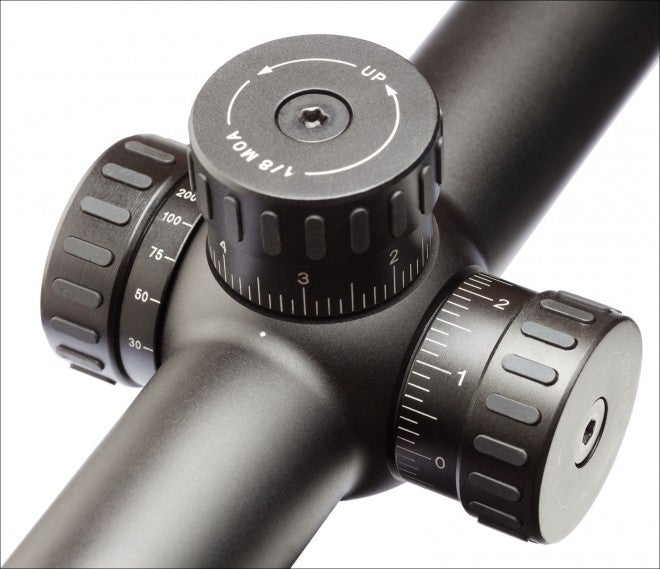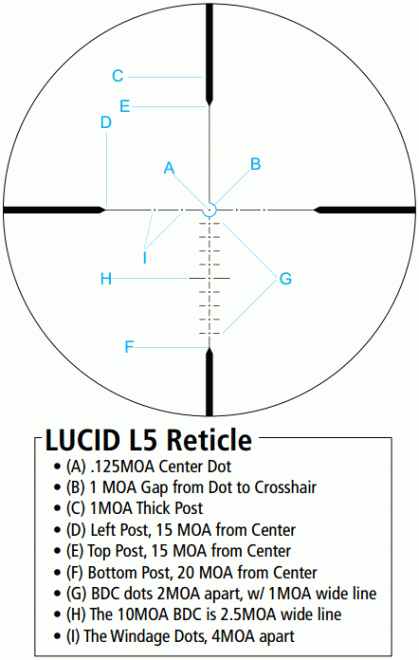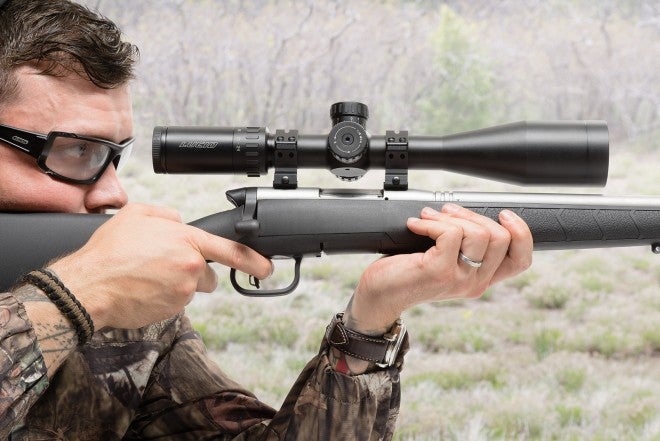When “Too Much Scope” Isn’t Too Much
Oleg Volk 05.18.15
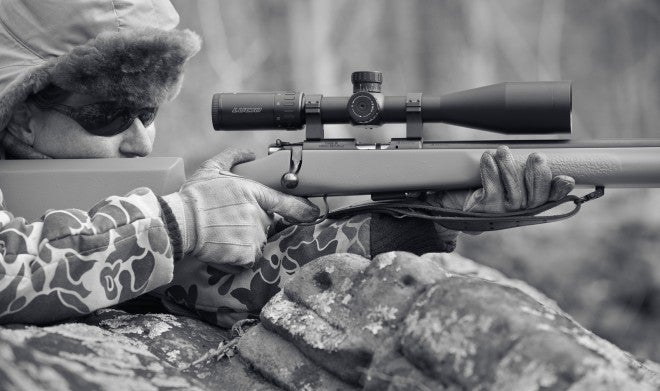
People complain about over-scoping of hunting rifles. A 3-9x scope is considered plenty for deer, and rightly so. In his book The Ultimate Sniper, Major Plaster recommends magnification equal to the expected maximum engagement range in hundred of yards. Yet plenty of scopes with magnification in excess of 10x are in use, often on rifles with the furthest effective ballistics under 300 yards. Why would serious people get so much glass when common sense argues against it?
The main reason for high-magnification hunting scopes is the reduced target size relative to military sniping and deer hunting. A varmint may range in size from three to ten inches, far smaller than the tiniest deer or the most scrawny enemy with a grenade. Incidentally, the need to tell the difference between a grenade and an avocado, or between a doe and a button buck, has also driven the increase in magnification and light gathering capacity of military and hunting optics.
The other reason for higher-magnification scope is the increased precision of the adjustments. For clean kills, even the tiny rodent targets have to be subtended into vital and non-vital zones. With ranges generally under 200 yards, precise focus/parallax adjustments are also helpful for seeing the targets clearly.
Finally, the issue is seeing the target animals at all. In theory, human eye resolves about 1MOA of detail, so we should be able to see a two inch tall squirrel at 200 yards. In practice, that’s only true with perfect eyesight and a black squirrel on a white background. Even then, we’d be able to see “something” but not the details of what it was. A brown ground squirrel on a brown background in the shade requires a great deal more magnification to see clearly. At a hundred yards, 24x scope will resolve high-contrast details just over 1mm in ideal lighting conditions–that resolution is scaling down greatly but still remaining adequate for the low-contrast, low-light condition in which most careful varmints are found.
Scopes like the 6-24 Lucid usually come with detailed reticles designed for consistent compensation of environmental factors, wind in particular. Using a portable weather station and a ballistic calculator program on a cell phone or a tablet, the shooter can estimate wind drift and hold over for it.
For example, with 10mph side wind, the 17WSM rifle with 20 grain bullets and initial velocity of 3000fps would drift sideways about 9 inches at 200 yards. Wind drift thus becomes a far greater factor than the group size, which would not exceed 2.5 inches at that range. Minimal recoil and high scope magnification often allow the shooter to spot right through the optic by using bullet contrails and correct by observation, but a first shot hit is still preferable. With 22WMR, wind drift would be nearly 24 inches at 200 yards, making the group size secondary to correct wind and mirage reading for accurate shooting.
The difference in wind drift is why 17HMR and 17WSM are gaining ground on 22WMR despite the reduced payload. When I first wrote about Savage B.Mag, ammunition was hard to come by. Now multiple makes are available at reasonable prices.
Incidentally, the rifle itself has also improved. Tapered blued barrel model has been joined by a version with a heavier stainless barrel, adding better thermal stability and more weather resistance at the cost of only half-pound of additional weight.
Incidentally, while both 20 and 25 grain loads showed the same accuracy (1.25MOA in my hands), point of impact differs by about an inch diagonally at 100 yards. So it would make sense to pick one load and stick to it, or else zero for the 20 grain varmint bullet on the assumption that the small to medium game targets for the 25-grainers would be large enough to compensate for the shift in the point of impact.
At this point, I suspect that the greatest increases in practical accuracy would come from extending the stock further forward to provide support closer to the muzzle and from learning to read the wind and compensate for it. The third component would be, as always, having enough scope to see the target clearly enough for a consistent hold.
While 24x magnification is great for shooting at 200 yards from a bipod or a sandbag, it’s a hindrance for handheld use. Turning the scope down to 6 power enables reasonable handheld aiming at closer ranges or against moving targets. In low light, that also maximizes the exit pupil of the scope, delivering more light to the eye.
